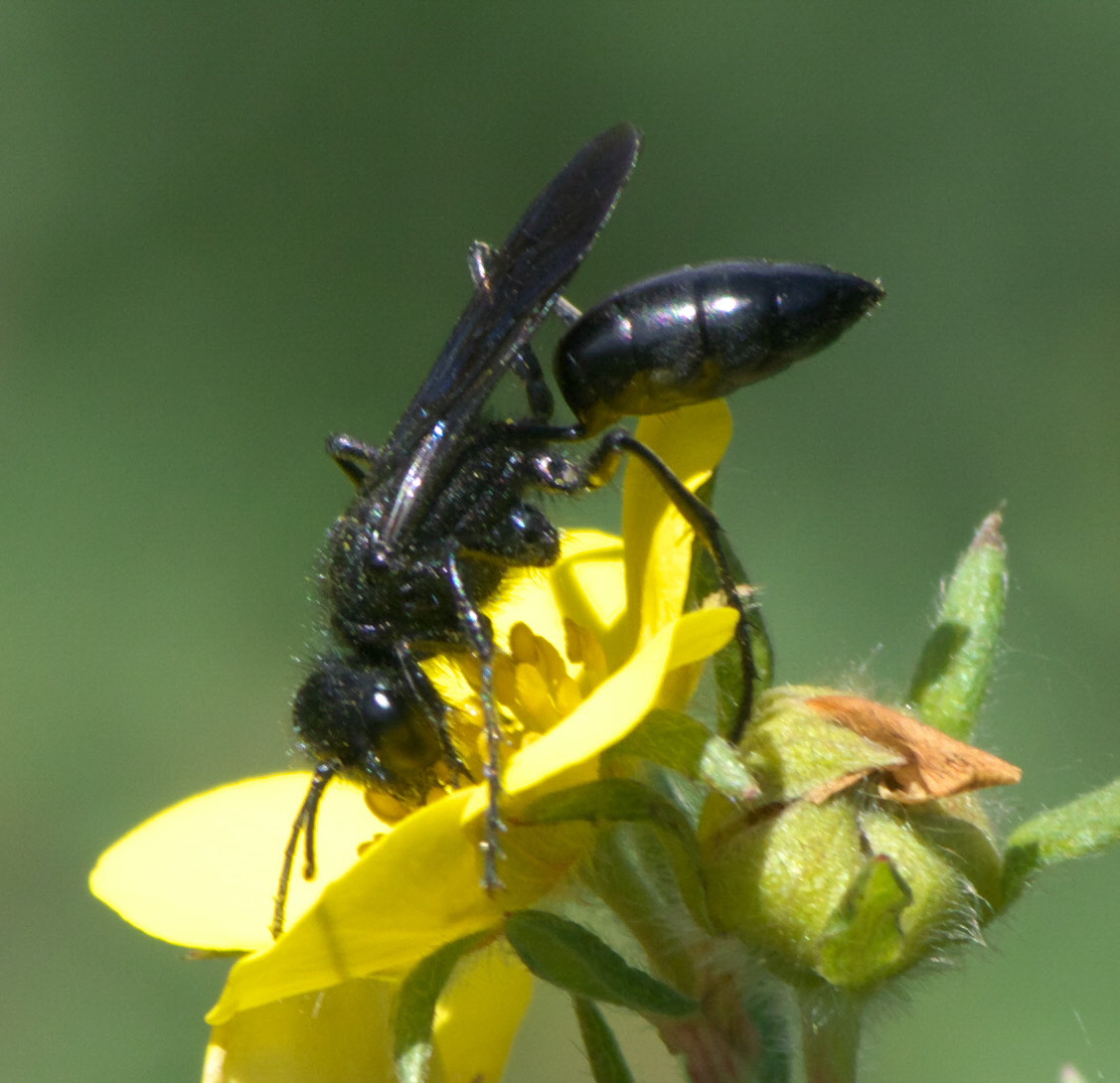|
Sphecidae
The Sphecidae are a Cosmopolitan distribution, cosmopolitan family of wasps of the suborder Apocrita that includes Ammophilinae, sand wasps, mud daubers, and other thread-waisted wasps. The name Sphecidae was formerly given to a much larger grouping of wasps. This was found to be paraphyletic, so most of the old subfamilies have been moved to the Crabronidae. Biology The biology of the Sphecidae, even under the restricted definition, is still fairly diverse; some sceliphrines even display rudimentary forms of sociality, and some sphecines rear multiple larvae in a single large brood cell. Many nest in pre-existing cavities, or dig simple burrows in the soil, but some species construct free-standing nests of mud and even (in one genus) resin. All are predatory and parasitoidal, but the type of prey ranges from spiders to various dictyopterans, orthopteroids and larvae of either Lepidoptera or other Hymenoptera; the vast majority practice mass provisioning, providing all the pr ... [...More Info...] [...Related Items...] OR: [Wikipedia] [Google] [Baidu] |
Crabronidae
The Crabronidae is a large family of wasps within the superfamily Apoidea. Taxonomy and phylogeny This family has historically been treated as a subfamily in the now-defunct Spheciformes group under the family Sphecidae. The Spheciformes included well over 200 genera, containing well over 9000 species. Revision of these taxa resulted resulted in the restriction of the Sphecidae to what was once the subfamily Sphecinae. As a result, the former Crabroninae was elevated to family status as Crabronidae. Subsequent revision has further restricted the Crabronidae. Several of the subfamilies of the Crabronidae are often treated as families in their own right, as is true of the most recent phylogenies. Of these lineages of Apoidea, only three were not included within Crabronidae in the past: Ampulicidae, Sphecidae, and Anthophila. The following phylogenetic tree is based on Sann ''et al.'', 2018, which used phylogenomics to demonstrate that both the bees ( Anthophila) and the Sphe ... [...More Info...] [...Related Items...] OR: [Wikipedia] [Google] [Baidu] |
